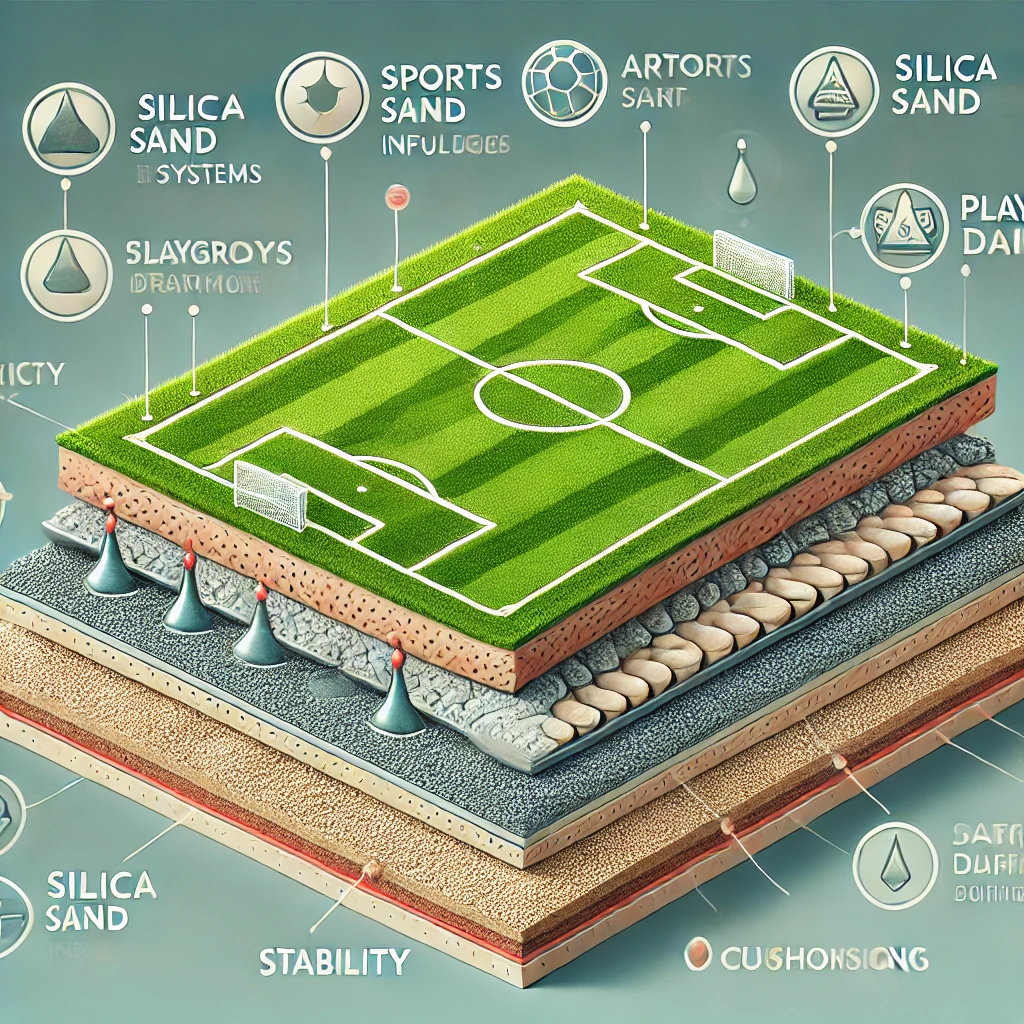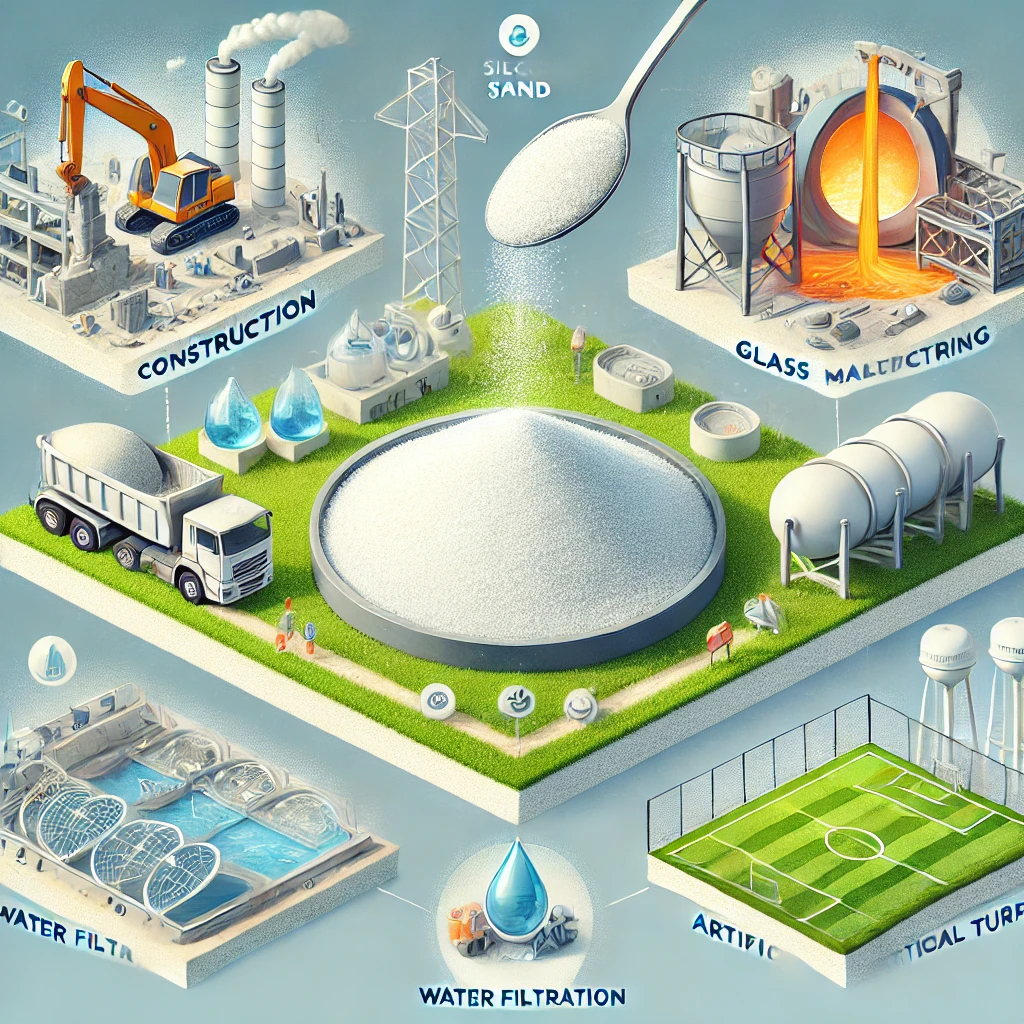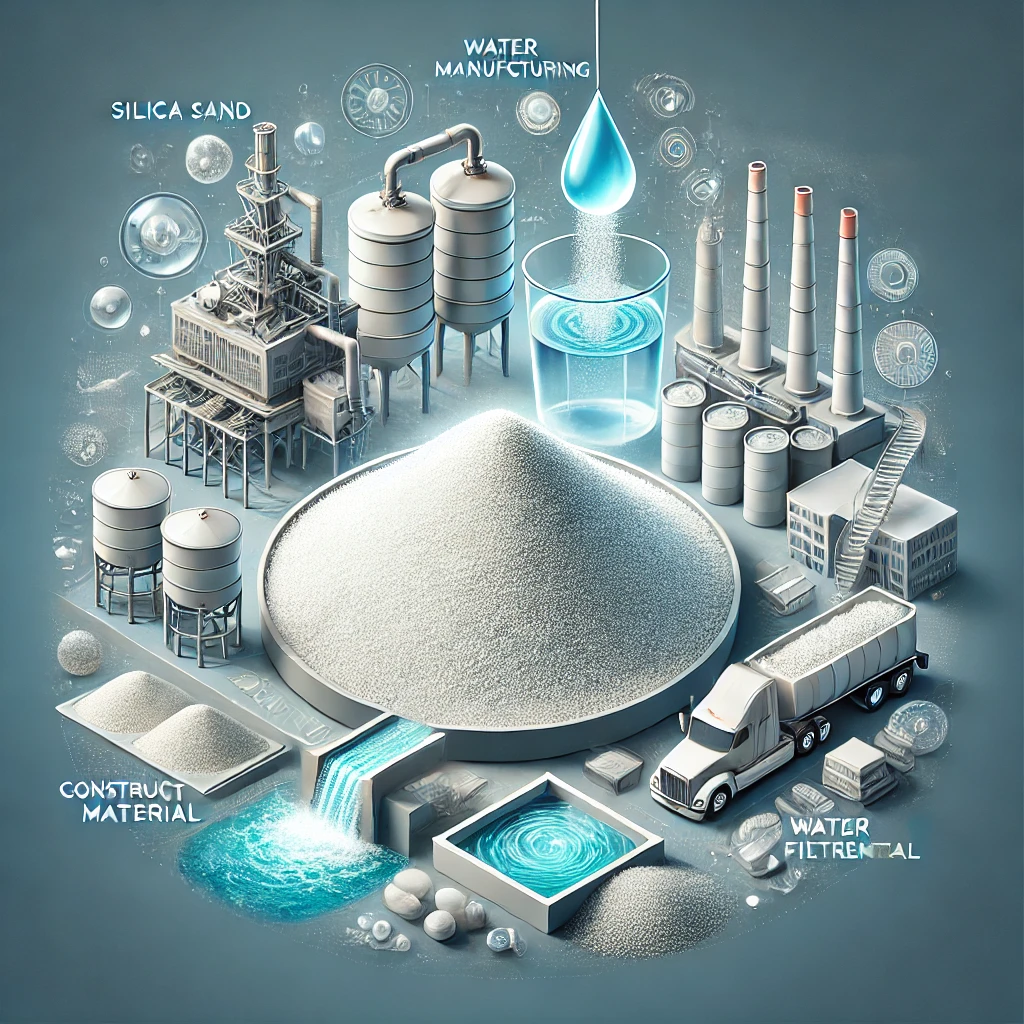Artificial turf systems have become a popular choice for sports fields, playgrounds, and landscaping projects due to their low maintenance and year-round usability. One key component that ensures the durability and performance of these systems is silica sand. In this article, we’ll explore the role of silica sand in artificial turf systems and how to choose the perfect sand for your project.
Why Silica Sand is Essential for Artificial Turf
Silica sand serves as an infill material in artificial turf systems, providing several critical functions:
- Stability: Silica sand adds weight to the turf, preventing it from project or moving underfoot.
- Durability: It protects the turf fibers from wear and tear, extending the lifespan of the system.
- Drainage: The sand’s porous nature allows water to pass through, preventing pooling and ensuring a dry surface.
- Shock Absorption: Sand infill provides cushioning, reducing the impact on players and minimizing injuries.
Characteristics of the Perfect Silica Sand for Artificial Turf
To maximize the benefits of silica sand in artificial turf systems, it’s important to choose the right type. Key characteristics include:
1. Grain Size
The ideal grain size depends on the application:
- Sports Fields: Medium to coarse grains provide optimal stability and shock absorption.
- Playgrounds: Finer grains offer a softer surface for children.
- Landscaping: A mix of grain sizes ensures both aesthetics and functionality.
2. Roundness
Rounded grains are preferred as they reduce friction, minimizing wear on turf fibers and creating a smoother surface.
3. Purity
High-purity silica sand with minimal dust and contaminants ensures better performance and safer use. Look for sand with at least 95% silicon dioxide (SiO₂) content.
4. Color
Bright white or natural tan silica sand enhances the aesthetic appeal of the turf while reflecting heat to keep the surface cooler.
Benefits of Using Silica Sand in Artificial Turf Systems
1. Enhanced Playability
Silica sand infill provides a firm and stable surface, ensuring consistent ball roll and player traction for sports fields.
2. Low Maintenance
With silica sand, artificial turf systems require less frequent grooming and upkeep, saving time and costs.
3. Weather Resistance
The sand’s drainage capabilities prevent waterlogging, ensuring the turf remains usable even after heavy rain.
4. Longer Lifespan
By protecting turf fibers from UV rays and physical wear, silica sand helps maintain the system’s appearance and functionality for years.
How to Apply Silica Sand in Artificial Turf
- Spread Evenly: Use a spreader to distribute the sand evenly across the turf.
- Brush In: Use a power brush to work the sand into the turf fibers.
- Check Depth: Ensure the infill reaches the recommended depth for your specific turf system.
- Regular Maintenance: Periodically inspect and replenish the sand to maintain optimal performance.
Conclusion
Silica sand is a vital component of artificial turf systems, enhancing stability, durability, and overall performance. By choosing the right silica sand and applying it correctly, you can ensure a high-quality, long-lasting artificial turf system for any application.
If you’re in search of premium silica sand for your artificial turf project, contact us today. We offer a range of high-quality sands tailored to meet your specific needs.



